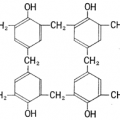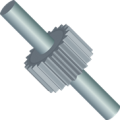INDEX
1. About light curing
Light is a collection of particles called photons, but the individual photons have the nature of the electromagnetic wave.
Photon will have a unique energy, the same way as the electromagnetic waves and gather, is proportional to the frequency (ν), and inversely proportional to the wavelength (λ).
To each wavelength it has given a name,
They has been defined, 0.10 – 0.4 μm band ultraviolet rays, 0.70 – 1000 μm band infrared rays.

*For ultraviolet light, please refer to the “Science of ultraviolet light” (Japanese)our online seminar.
When photons collide with molecules that make up the substance, molecule is in a high energy state and got the energy of the photon.
The before the photon collides ground state, that of high-energy state, is called an excited state.
By any of the three movements, molecules will try to return to the original ground state and consumes energy (⊿E) given by a collision.
1st, it is released as heat energy, this is called radiation.
2nd, it is released as light energy, referred to as light emitting.
3rd, the photoreaction, and then consumed to build a cross-linked structure between molecules.
The construction of the cross-linked structure (= polymerization), liquid resin and a soft resin is cured.
Resin cured bathed with ultraviolet rays or “Light curing resin” or “UV curing resin”.
Resin cured bathed the infrared is usually “Thermosetting resin”, usually it is not included in the Light curing resin.
2. Used for dental treatment <constitution of a composite resin (the main component).
BisGMA: 2.2- bis [4- (2-hydroxy-3-methacryloxy propoxy) phenyl] propane
UDMA: di (methacryloxyethyl) trimethylhexamethylene diurethane
3. Photolithography ・Letterpress printing for photoresist
| Light source | Wavelength | The base resin |
|---|---|---|
| High pressure mercury lamp g-line | 436nm | Novolak resin + 1.2-naphthoquinonediazide sulfonic acid ester (NQD) |
| High pressure mercury lamp i-line | 365nm | Polyhydroxystyrene (PHS) |
| KrF excimer laser | 248nm | copolymers of p- hydroxystyrene and (PHS) tert- Butyl methacrylate |
| ArF excimer laser | 193nm | (Meth) acrylic ester polymer |
| F2 laser | 157nm | Fluorine-based Porimo-siloxane-based polymer |
| EUV | 13.6nm | Study phase |
4.UV offset printing inks
The main component of the UV ink, photopolymerizable resin, photo polymerization initiator, in the colorants and auxiliaries, does not include an organic solvent in principle.
It is classified as a reaction type ink, it does not have strong adhesive force of about two-liquid reaction type ink.
UV ink has to adjust the viscosity by a reactive diluent, such as oligomers, monomers of low viscosity (reducer).
Main component, polyester acrylate, epoxy acrylate, and urethane acrylate.
5. Gel Nails
There is a decoration method that dish out the light curing resin to the nails, it will be referred to as the Gel Nails.
5-1. Cosmetics legal obligation
Gel Nails strikes to “cosmetic” on the Pharmaceutical Affairs Law, there is a legal obligation.
Please pay attention to handling.
In the United States; is required approval of the (Food and Drug Administration FDA).
In South Korea, there are law alone that Cosmetic Act (화장품법) . (2000 Law No. 06 025)
In Taiwan Republic of China requires compliance and understanding of the “Standards of Cosmetic Ingredients”, “cosmetics hygiene management regulations”.
5-2. Component
Hard gel and Soak off (Soft)gel are basically the main component acrylic resin.
The difference in molecular weight, reaction point and molecular structure will be the difference in the product.
■ Hard Gel
The coupling surface of the molecule are many, it will make a hard strong polymer.
Hard Gel is popular with outstanding clarity and strength.
Hard Gel is not soluble in the remover, user can drop it by shaving.
■ Soak off gel
The coupling surface of the molecule is small, it will create a weak polymer binding force there is flexibility.
Using a dedicated remover, user can drop by dissolving the gel.
5-2-1. Main component
Methacrylic acid ester monomer
Acrylic acid oligomer
5-2-2. Photopolymerization initiator (Photo-initiator)
(1-Hydroxycyclohexylphenylketone)
Bis(2,4,6-Trimethylbenzoyl)-phenylphosphine oxide
2-Methyl-1-[4-(methylthio)phenyl]-2-morpholino-porpane-1-one
2,4-Diethylthioxanothone
5-2-3. Solvent
Acetone
Methyl acetate
Isopropyl alcohol
 HEAT-TECH Best Technology Online Shop
HEAT-TECH Best Technology Online Shop 










